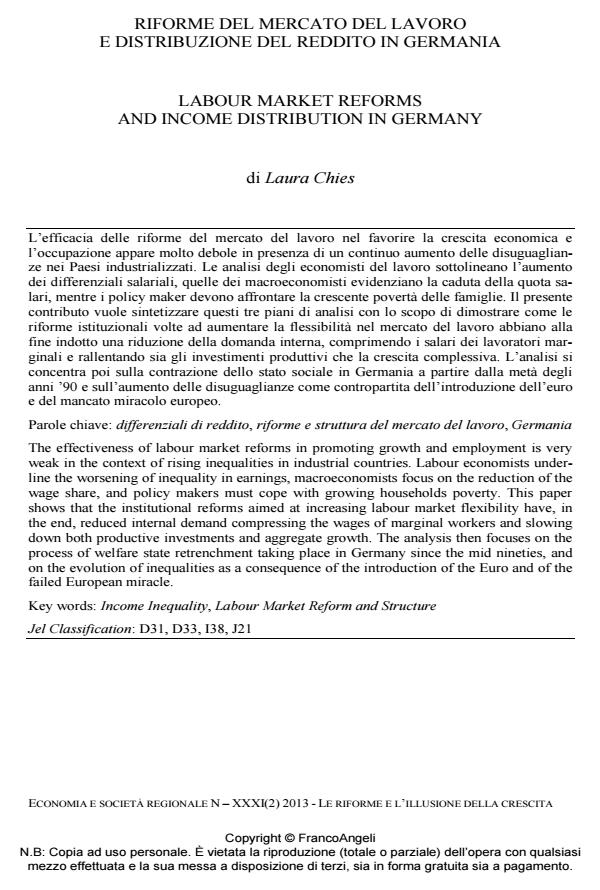Riforme del mercato del lavoro e distribuzione del reddito in Germania
Titolo Rivista ECONOMIA E SOCIETÀ REGIONALE
Autori/Curatori Laura Chies
Anno di pubblicazione 2013 Fascicolo 2013/2
Lingua Italiano Numero pagine 23 P. 42-64 Dimensione file 814 KB
DOI 10.3280/ES2013-002003
Il DOI è il codice a barre della proprietà intellettuale: per saperne di più
clicca qui
Qui sotto puoi vedere in anteprima la prima pagina di questo articolo.
Se questo articolo ti interessa, lo puoi acquistare (e scaricare in formato pdf) seguendo le facili indicazioni per acquistare il download credit. Acquista Download Credits per scaricare questo Articolo in formato PDF

FrancoAngeli è membro della Publishers International Linking Association, Inc (PILA)associazione indipendente e non profit per facilitare (attraverso i servizi tecnologici implementati da CrossRef.org) l’accesso degli studiosi ai contenuti digitali nelle pubblicazioni professionali e scientifiche
L’efficacia delle riforme del mercato del lavoro nel favorire la crescita economica e l’occupazione appare molto debole in presenza di un continuo aumento delle disuguaglianze nei Paesi industrializzati. Le analisi degli economisti del lavoro sottolineano l’aumento dei differenziali salariali, quelle dei macroeconomisti evidenziano la caduta della quota salari, mentre i policy maker devono affrontare la crescente povertà delle famiglie. Il presente contributo vuole sintetizzare questi tre piani di analisi con lo scopo di dimostrare come le riforme istituzionali volte ad aumentare la flessibilità nel mercato del lavoro abbiano alla fine indotto una riduzione della domanda interna, comprimendo i salari dei lavoratori marginali e rallentando sia gli investimenti produttivi che la crescita complessiva. L’analisi si concentra poi sulla contrazione dello stato sociale in Germania a partire dalla metà degli anni ’90 e sull’aumento delle disuguaglianze come contropartita dell’introduzione dell’euro e del mancato miracolo europeo.
Parole chiave:Differenziali di reddito, riforme e struttura del mercato del lavoro, Germania
Laura Chies, Riforme del mercato del lavoro e distribuzione del reddito in Germania in "ECONOMIA E SOCIETÀ REGIONALE " 2/2013, pp 42-64, DOI: 10.3280/ES2013-002003